Articles de la rubrique "velvaereapotek.com"
Understanding Rapamycin The Future of Longevity and Health
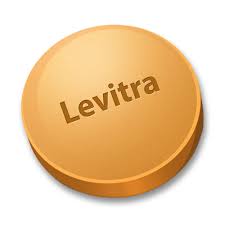
Understanding Rapamycin: The Future of Longevity and Health
Rapamycin, a powerful drug originally discovered in soil samples from Easter Island, has gained considerable attention in recent years for its potential health benefits and role in the field of longevity science. With growing interest, many are looking into Rapamycin rapamycin kjøp options as they delve deeper into its therapeutic possibilities. In this article, we will explore what Rapamycin is, how it works, its benefits, potential side effects, and ongoing research that may redefine our understanding of aging and health.
What is Rapamycin?
Rapamycin, also known as Sirolimus, is a macrolide compound that was first isolated from the bacterium Streptomyces hygroscopicus in 1972. Initially used as an antifungal agent, researchers soon discovered its immunosuppressive properties, leading to its application in organ transplantation to prevent rejection. Over time, studies have revealed that Rapamycin has potential uses beyond transplant medicine, particularly in the realm of aging and metabolic diseases.
The Mechanism of Action
Rapamycin works primarily by inhibiting a protein called mTOR (mammalian target of rapamycin). mTOR is a central regulator of cell growth, proliferation, metabolism, and survival. Inhibition of this pathway has been shown to mimic caloric restriction, a well-known factor associated with increased lifespan in various organisms. By limiting the activity of mTOR, Rapamycin can potentially extend lifespan and improve health span, which is the period of life spent in good health.
Benefits of Rapamycin

1. Longevity
One of the most exciting aspects of Rapamycin is its potential to extend lifespan. Studies in mice have shown that treatment with Rapamycin can lead to a significant increase in longevity. These findings have sparked interest in its potential application to humans, prompting various studies to investigate its effects on aging and age-associated diseases.
2. Immune Function
Rapamycin has been shown to have immunosuppressive effects, which can be beneficial in certain contexts, such as organ transplantation. However, intriguing research also indicates that low doses of Rapamycin may help modulate the immune system, making it a candidate for improving immune function in aging populations, potentially reducing the risk of infections and enhancing vaccine responses.
3. Cardiovascular Health
Research suggests that Rapamycin may have protective effects on the cardiovascular system. Studies have demonstrated that it can help improve arterial health and reduce the risk of atherosclerosis, a condition characterized by the buildup of plaques in arteries. These cardiovascular benefits could play a role in extending healthy lifespan.
4. Neuroprotection
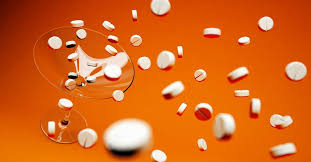
Another area of active research is Rapamycin’s potential neuroprotective effects. Studies in animal models have indicated that Rapamycin may help protect against neurodegenerative diseases such as Alzheimer’s. By modulating cellular processes related to stress response and inflammation, it may slow cognitive decline associated with aging.
Potential Side Effects
While the benefits of Rapamycin are promising, it is essential to consider potential side effects. Common side effects may include mouth sores, elevated cholesterol levels, and increased risk of infection due to its immunosuppressive properties. Long-term use isn’t well-studied in humans, so anyone considering Rapamycin for longevity or health improvement should consult with a healthcare professional.
Ongoing Research and Future Directions
As interest in Rapamycin continues to grow, ongoing research is focused on understanding its mechanisms, optimal dosing strategies, and potential applications in various disease models. Clinical trials are exploring its effects on age-related conditions such as cancer, cardiovascular disease, and neurodegenerative disorders. Moreover, innovative research is examining how Rapamycin can be used in combination with other therapies for enhanced benefits.
Conclusion
The future of Rapamycin appears bright as researchers continue to investigate its myriad potential applications. From extending lifespan to improving immune function and potentially combating neurodegenerative disorders, the implications of this drug are significant. As the scientific community deepens its understanding of this compound, the hope is that Rapamycin will play a critical role in the quest for longevity and improved health in our aging population. However, it’s paramount for individuals to approach its use judiciously and under medical guidance. The journey of discovery surrounding Rapamycin is just beginning, and it could usher in groundbreaking changes in how we approach aging and wellness.
Catégorie: velvaereapotek.com | Tags:
Understanding Tretinoin Gel Benefits, Usage, and Considerations

Understanding Tretinoin Gel: Benefits, Usage, and Considerations
Tretinoin Gel is an incredibly effective topical treatment developed from Vitamin A that helps in managing various skin conditions, primarily acne and signs of skin aging. The versatility and potency of this medication make it a popular choice among dermatologists and patients alike. For those considering the use of Tretinoin, it is crucial to understand its application, benefits, potential side effects, and overall management. If you are interested in acquiring Tretinoin without a prescription, you can visit Tretinoin Gel tretinoin krem uten resept.
What is Tretinoin Gel?
Tretinoin, also known as all-trans retinoic acid, is a synthetic retinoid derived from Vitamin A. It is primarily used in dermatology for its ability to promote cell turnover, which helps clear clogged pores and reduce inflammation. Tretinoin Gel comes in various concentrations and is typically selected based on the severity of the skin condition being treated.
How Does Tretinoin Gel Work?
The effectiveness of Tretinoin Gel lies in its ability to enhance the natural exfoliation process of the skin. It promotes the shedding of dead skin cells and encourages the formation of new, healthy skin. By doing so, Tretinoin helps to minimize the appearance of acne, fine lines, and hyperpigmentation. Furthermore, it assists in improving skin texture and tone, making it a go-to product for both acne treatment and anti-aging.

Benefits of Using Tretinoin Gel
One of the significant advantages of Tretinoin Gel is its multifaceted approach to skin health. Here are some of the notable benefits:
- Acne Treatment: Tretinoin is proven to reduce acne outbreaks by preventing the formation of new acne lesions and speeding up the healing process of existing pimples.
- Anti-Aging Properties: By promoting collagen production and reducing fine lines and wrinkles, Tretinoin helps restore youthful skin appearance.
- Reduction in Pigmentation: Tretinoin Gel can help lighten hyperpigmentation and even out skin tone, making it effective for dark spots and melasma.
- Improved Skin Texture: Regular use of Tretinoin leads to smoother skin and reduces the occurrence of rough patches.
How to Use Tretinoin Gel
To achieve the best results with Tretinoin Gel, proper application is key. Here are some guidelines to follow:
- Cleanse: Start with a gentle cleanser to cleanse your face. Pat dry gently.
- Apply: Use a pea-sized amount of Tretinoin Gel. Apply it evenly to the affected areas, avoiding sensitive areas such as the eyes and mouth.
- Moisturize: After allowing the Tretinoin to absorb for about 20 minutes, follow up with a moisturizer to help combat potential dryness.
- Frequency: Begin using Tretinoin once a week, gradually increasing frequency as your skin builds tolerance. Aim for daily use as tolerated.
Potential Side Effects
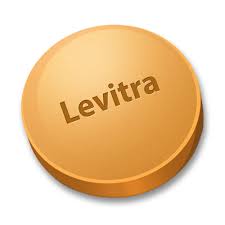
While Tretinoin Gel is considered safe for most users, it may cause certain side effects, especially in the early weeks of use. Common side effects include:
- Redness
- Peeling or flaking skin
- Dryness
- Burning or stinging sensation
These side effects generally improve after a few weeks as the skin adjusts. However, if the irritation worsens, it is advisable to consult with a healthcare provider.
Special Considerations
Before starting treatment with Tretinoin Gel, there are several important factors to consider:
- Pregnancy and Breastfeeding: Tretinoin is not recommended for use during pregnancy and nursing due to potential risks to the baby.
- Sun Sensitivity: Tretinoin may increase your skin’s sensitivity to sunlight, making it essential to use sunscreen daily.
- Other Medications: Inform your healthcare provider about any other topical or oral medications you are using, as certain combinations may increase irritation.
Conclusion
Tretinoin Gel is a powerful ally in the quest for clearer, youthful skin. With its broad spectrum of benefits—from treating acne to reducing signs of aging—it is no wonder that so many people turn to this effective topical treatment. However, like any medication, it is essential to use Tretinoin responsibly and in consultation with a qualified healthcare provider. By understanding how Tretinoin works and taking the proper precautions, you can harness its full potential for achieving your skincare goals.
Catégorie: velvaereapotek.com | Tags:
Understanding Propecia Generisk A Comprehensive Guide
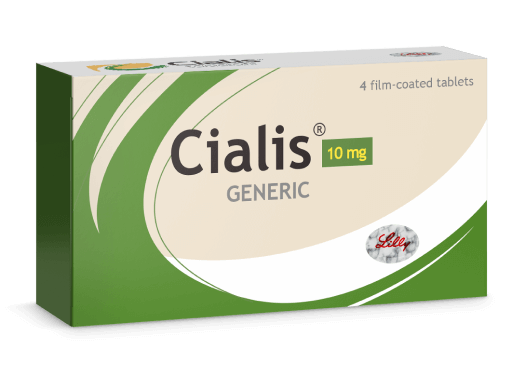
Everything You Need to Know About Propecia Generisk
If you’re struggling with hair loss, you may have come across Propecia Generisk. This medication, known for its effectiveness in treating male pattern baldness, is a popular choice among those looking to regain their confidence. As you dive into the world of hair restoration, it’s essential to understand what Propecia Generisk is, how it works, and the factors to consider before beginning treatment. For those in Norway, you can explore options to acquire Propecia Generisk finasteride norge and start your journey towards healthier hair.
What is Propecia Generisk?
Propecia Generisk is a generic version of the brand name drug Propecia, which contains the active ingredient finasteride. Finasteride is classified as a 5-alpha reductase inhibitor, meaning it works by inhibiting the enzyme responsible for converting testosterone into dihydrotestosterone (DHT), a hormone linked to hair loss in men. By reducing DHT levels, Propecia Generisk can help halt hair loss and promote hair regrowth.
How Does Propecia Generisk Work?
The mechanism of action of Propecia Generisk is fairly straightforward. DHT is a potent androgen that binds to receptors in hair follicles, leading to follicle miniaturization and, eventually, hair loss. When finasteride is taken, it reduces the production of DHT significantly—by about 60%—which can slow down the hair loss process and, in some cases, even lead to new hair growth. While results can be promising, they typically take time to appear, generally requiring three to six months of consistent use before noticeable improvements are observed.
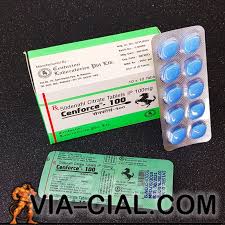
Who Should Consider Using Propecia Generisk?
Propecia Generisk is primarily prescribed for men experiencing androgenetic alopecia, also known as male pattern baldness. This condition can start as early as the late teenage years or early twenties for some men and is characterized by a progressive thinning of hair on the scalp. However, it’s essential to consult with a healthcare professional before starting treatment to ascertain if Propecia Generisk is a suitable option for you. Factors like age, overall health, and the severity of hair loss are crucial in determining candidacy.
Potential Side Effects
Like any medication, Propecia Generisk may come with a range of potential side effects. The most commonly reported side effects include:
- Decreased libido
- Difficulty achieving an erection
- Ejaculation disorders
- Breast tenderness or enlargement
- Rash
These side effects are not experienced by everyone and often resolve after discontinuing the medication. However, some individuals may experience persistent effects even after stopping Propecia Generisk, a condition referred to as post-finasteride syndrome. Thus, it’s vital to discuss these risks with your doctor before commencing treatment.
Dosage and Administration
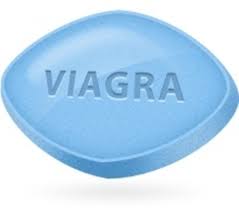
The standard dosage for Propecia Generisk is 1 mg taken orally once a day. It’s crucial to take the medication consistently at the same time each day to maximize its benefits. Propecia Generisk can be taken with or without food; however, drinking alcohol excessively can affect its efficacy. It’s essential not to crush or break the tablets, as they are designed to release the medication slowly into your system.
Long-term Use and Efficacy
Many men find that they need to use Propecia Generisk continuously to maintain the effects. If treatment is stopped, any regrowth achieved may be lost within 12 months, and hair loss may resume. Therefore, discussing long-term treatment plans with your healthcare provider is advisable. Regular follow-ups can also help monitor progress and any potential side effects.
Where to Buy Propecia Generisk
For those interested in purchasing Propecia Generisk, it’s essential to do so from reputable sources. In Norway, there are multiple online pharmacies where you can order finasteride without a prescription. However, ensure that you purchase from sites that require a consultation with a licensed healthcare provider to verify the appropriateness of the medication for your condition.
Conclusion
Propecia Generisk is a viable option for men dealing with hair loss due to male pattern baldness. With its ability to reduce DHT levels and potentially promote hair regrowth, it offers hope for many seeking to improve their hair health. However, it’s paramount to consider the potential side effects and the necessity of ongoing treatment. If you’re contemplating using Propecia Generisk, consulting with a healthcare professional will help you make informed decisions and ensure that your hair restoration journey is safe and effective.
Catégorie: velvaereapotek.com | Tags:
Understanding the Benefits and Uses of Tretinoin Gel 10

Tretinoin Gel is a powerful topical medication often prescribed for acne treatment and skin rejuvenation. It is a derivative of Vitamin A, scientifically known for its ability to promote cell turnover, decrease oiliness, and reduce the appearance of fine lines and hyperpigmentation. For those interested in purchasing Tretinoin Gel, it is conveniently available online Tretinoin Gel https://velvaereapotek.com/kjop-tretinoin-gel-uten-resept/ without a prescription, making it accessible for many seeking skin improvement.
What is Tretinoin Gel?
Tretinoin Gel is a topical formulation of all-trans retinoic acid. It belongs to the class of drugs known as retinoids. Typically, Tretinoin is used to treat various dermatological conditions, primarily acne. It works by accelerating the skin’s healing process, unclogging pores, and reducing inflammation. Tretinoin is also utilized in anti-aging treatments due to its effectiveness in enhancing skin texture and pigmentation.
How Does Tretinoin Gel Work?
The active ingredient in Tretinoin Gel, tretinoin, speeds up cell turnover, meaning it helps the skin shed its old, dead cells and replace them with new, healthier ones. This process helps to keep pores clear and prevent the formation of acne. Furthermore, Tretinoin stimulates collagen production, which can improve the appearance of wrinkles and fine lines, enhancing the overall quality and elasticity of the skin.
Benefits of Tretinoin Gel
Tretinoin Gel offers numerous benefits for various skin conditions. Some of the most notable advantages include:
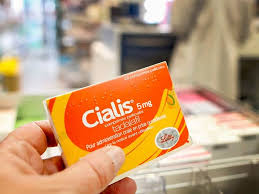
- Acne Treatment: Tretinoin is effective in reducing and preventing acne breakouts, making it a popular choice among dermatologists.
- Anti-Aging: The gel’s ability to promote collagen growth helps to reduce the appearance of fine lines and wrinkles.
- Hyperpigmentation Treatment: Tretinoin can lighten dark spots caused by sun exposure, promoting even skin tone.
- Skin Texture Improvement: Regular use of Tretinoin can result in smoother and clearer skin.
How to Use Tretinoin Gel

Using Tretinoin Gel effectively involves a few essential steps. First, it’s crucial to cleanse the skin gently before application. After drying the skin completely, a small amount of Tretinoin Gel should be applied, typically once daily before bedtime. A pea-sized amount is usually sufficient for the entire face. It’s important to avoid sensitive areas such as around the eyes and mouth.
Patients are often advised to start with a lower concentration of Tretinoin and gradually increase usage as their skin builds tolerance. During the initial treatment phase, some users may experience dryness or irritation, which usually subsides as the skin adapts.
Side Effects of Tretinoin Gel
While Tretinoin Gel is generally well-tolerated, some users may experience side effects. Common reactions can include:
- Redness: This may occur, particularly after the first few applications.
- Peeling Skin: As the skin sheds dead cells, some peeling may occur, especially during the adjustment period.
- Dryness: Users often report increased skin dryness, necessitating the use of moisturizers.
- Sensitivity to Sunlight: Tretinoin can make skin more sensitive to UV rays, necessitating the use of sunscreen during the day.
Precautions When Using Tretinoin Gel
Before starting treatment with Tretinoin Gel, it’s essential to consult a healthcare provider, especially for individuals with sensitive skin or those currently on other acne treatments. Moreover, it’s vital to avoid using Tretinoin along with products that contain alpha hydroxy acids (AHAs) or beta hydroxy acids (BHAs), as this combination may irritate the skin.
Patients considering pregnancy or breastfeeding should also discuss their plans with their doctors, as retinoids are typically not recommended during these periods due to potential risks.
Long-Term Use of Tretinoin Gel
For those using Tretinoin Gel for acne or anti-aging, long-term results can be impressive, with skin appearing healthier and more youthful. Continued use often enhances the skin’s overall condition, reducing the frequency of acne breakouts and improving texture and tone. However, some individuals may find they only need to use Tretinoin intermittently after achieving their desired results.
Conclusion
Tretinoin Gel stands out as a versatile and effective treatment option for various skin concerns, including acne and the signs of aging. Understanding its use, benefits, and side effects empowers users to make informed decisions regarding their skincare. Always consult a dermatologist to devise a personalized treatment plan, aiming for the healthiest skin possible.
Catégorie: velvaereapotek.com | Tags:

 Service commercial : 01 80 88 43 02
Service commercial : 01 80 88 43 02